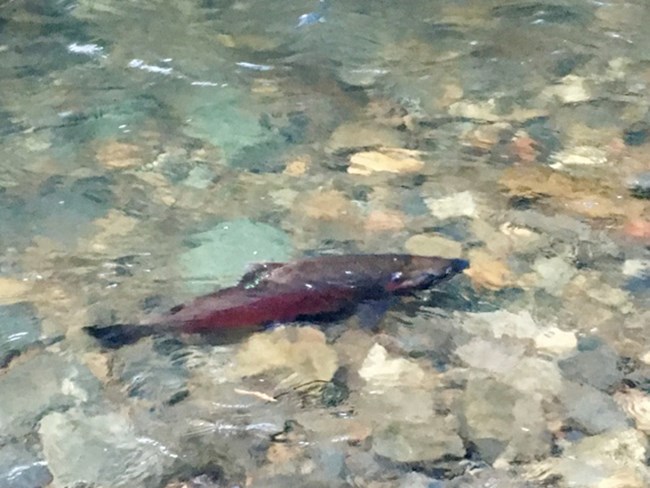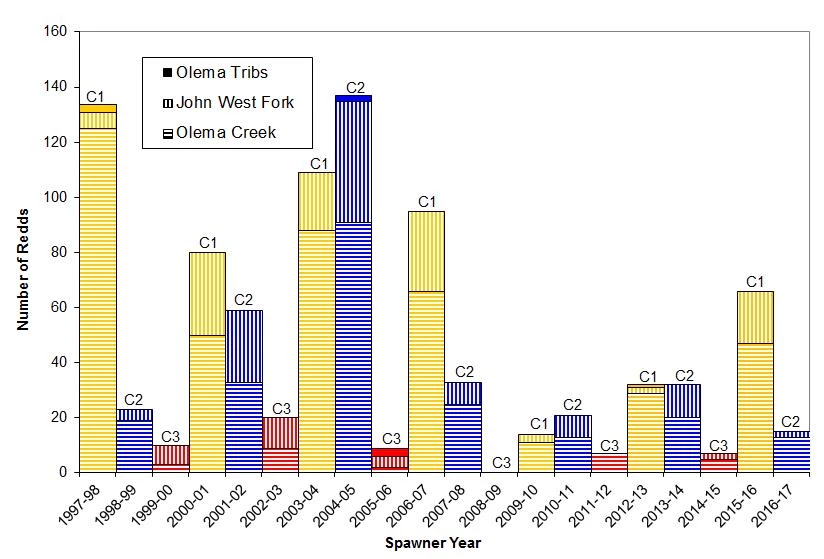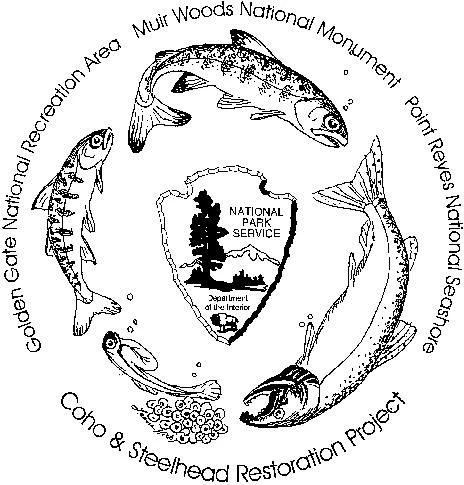Last updated: February 13, 2019
Article
Winter 2016-2017 Coho and Steelhead Spawner Survey Summary
A big thanks to all of our volunteers who participated in the 2016-2017 Coho and Steelhead Spawner Surveys! Through your dedication and flexibility, we were able to successfully complete all of our spawner surveys.
2016-2017 Spawner Season Summary
What is going on now!
Although our spawner season has come to a close, monitoring of coho and steelhead in West Marin marches on. Smolt trapping is underway and will continue through the month of May. The goal of the smolt trap is to estimate the number and health of coho salmon going out to sea. After leaving the creek these salmon will continue rearing in the ocean as they mature to adults. Smolt trapping is an excellent opportunity to monitor and handle a wide variety of aquatic species including coho salmon, steelhead, stickleback, sculpin, salamanders…and a whole lot more!
Coho salmon are three years old when they return to their natal stream to spawn. These spawners are the offspring of coho that spawned three years prior, and the parents of the generation that will spawn in another three years. As a result, there are three distinct year classes, or cohorts, of coho salmon spawners in each creek, each with its own population trends that may only be tracked every third year. The 2016-2017 spawner cohort is primarily descended from coho that spawned in the winter of 2013-2014.
This winter, Marin County saw its wettest January in over 20 years—the seventh wettest since record keeping began in 1880. Although crews were unable to survey as often as in past winters due to the heavy storm events, we observed more than double the number of coho redds (nests) on Redwood Creek compared to the winter of 2013-2014. The number of redds on Cheda Creek stayed the same, and we counted 35% fewer redds on Olema Creek compared to the previous generation of this cohort. However, given the storm pattern and stream conditions in December and January, it is possible that some redds were not detected. It can take over a week after a large storm event for creeks to return to optimal survey conditions. Large storms can also leave redds indiscernible from other areas of the stream bed. We will use juvenile surveys performed in the summer of 2017 in Olema, Pine Gulch, and Redwood Creeks to validate the spawner counts and indicate if redd under-detection was likely.

NPS / Sarah Carlisle
We saw live coho on Redwood Creek between December 9 and January 30. In total, we counted 47 live coho, two coho carcasses and 16 coho redds. All of the coho redds on Redwood Creek were found during the week of December 11. We also counted two live adult steelhead and one steelhead carcass on Redwood Creek.
On December 9, 106 coho (37 male and 69 female) that were captured and reared in captivity as part of the Redwood Creek Coho Salmon Rescue and Captive Rearing Project, were released back into Redwood Creek to spawn. Of the 47 live fish we observed during spawner surveys, 40 were hatchery fish, identified by colored tags attached near their dorsal fins (see photo). It should be noted that live adult coho and steelhead totals may include repeat sightings.
We encountered the first live coho on Olema Creek on December 21, and the last on January 16. The majority of our coho redd observations also occurred during that time. In total, we counted 15 coho redds and 20 live adult coho on Olema Creek. In addition to coho observations, we recorded one steelhead redd, four live adult steelhead, and two steelhead carcasses.
For the fifth consecutive year, we observed coho in Cheda Creek, a tributary to Lagunitas Creek. One live coho, one redd, and three coho carcasses were all identified during a survey on December 9. No coho or steelhead were observed during our three other surveys of Cheda Creek. We found six additional redds, but could not identify their species.
Trends in Coho Salmon Spawning
While the 2016-2017 cohort on Olema has fluctuated over the last four generations (33 redds in 2007-2008, 21 redds in 2010-2011, and 32 redds in 2013-2014), the 15 redds we counted during the 2016-2017 season marks the lowest count for this cohort since monitoring began. In contrast the 2016-2017 cohort on Redwood Creek has risen over the last four generations (one redd in 2007-2008, three redds in 2010-2011, five redds in 2013-2014, and 16 redds in 2016-2017). Given the number of hatchery origin adult coho we observed spawning, it is likely that the adult coho release contributed to the increase in redds during the 2016-2017 season. Although we observed spawning in Cheda Creek, overall abundance in this small tributary to Lagunitas Creek remains low. Pine Gulch Creek continues to show no sign of coho spawning activity. For annual coho redd counts observed on Olema and Redwood Creeks over the last 20 years, please see Figures 1 & 2 below.


For More Information
For more information about the San Francisco Bay Area Salmonid Monitoring Program, contact Michael_Reichmuth@nps.gov or call 415-464-5191.
The National Park Service shall not be held liable for improper or incorrect use of the data described and/or contained herein. These data and related graphics (if available) are not legal documents and are not intended to be used as such. The information contained in these data is dynamic and may change over time. The National Park Service gives no warranty, expressed or implied, as to the accuracy, reliability, or completeness of these data.

